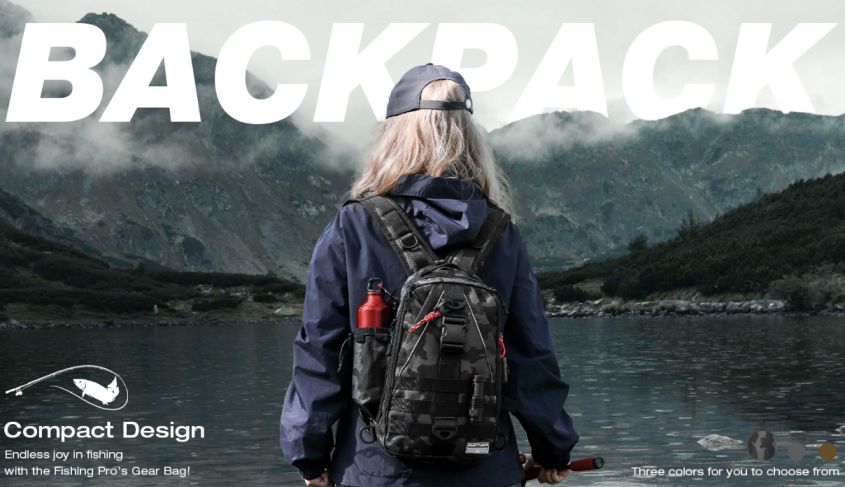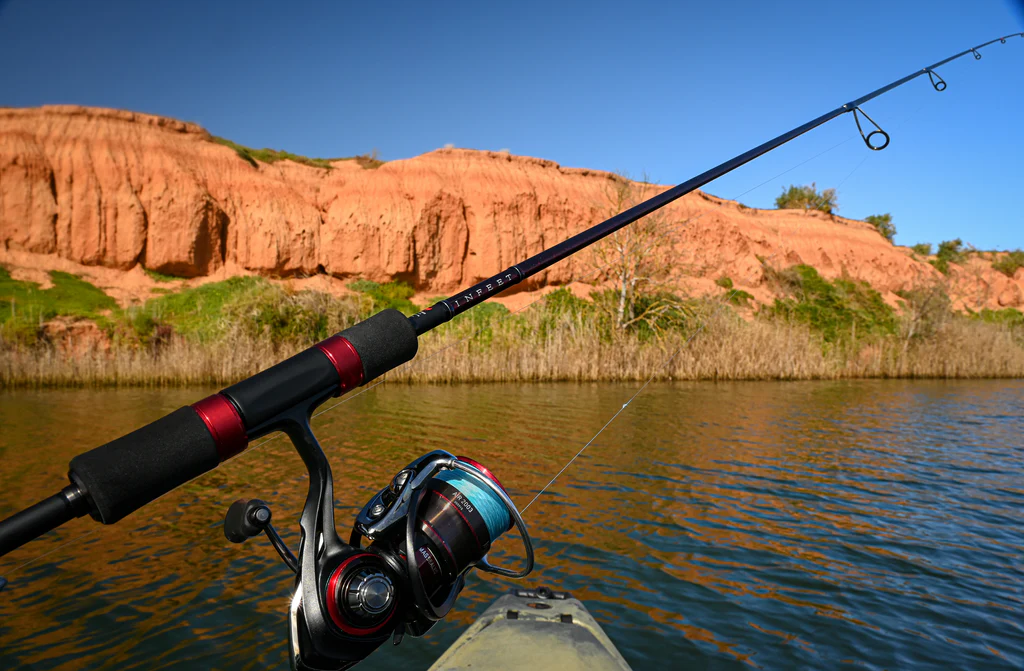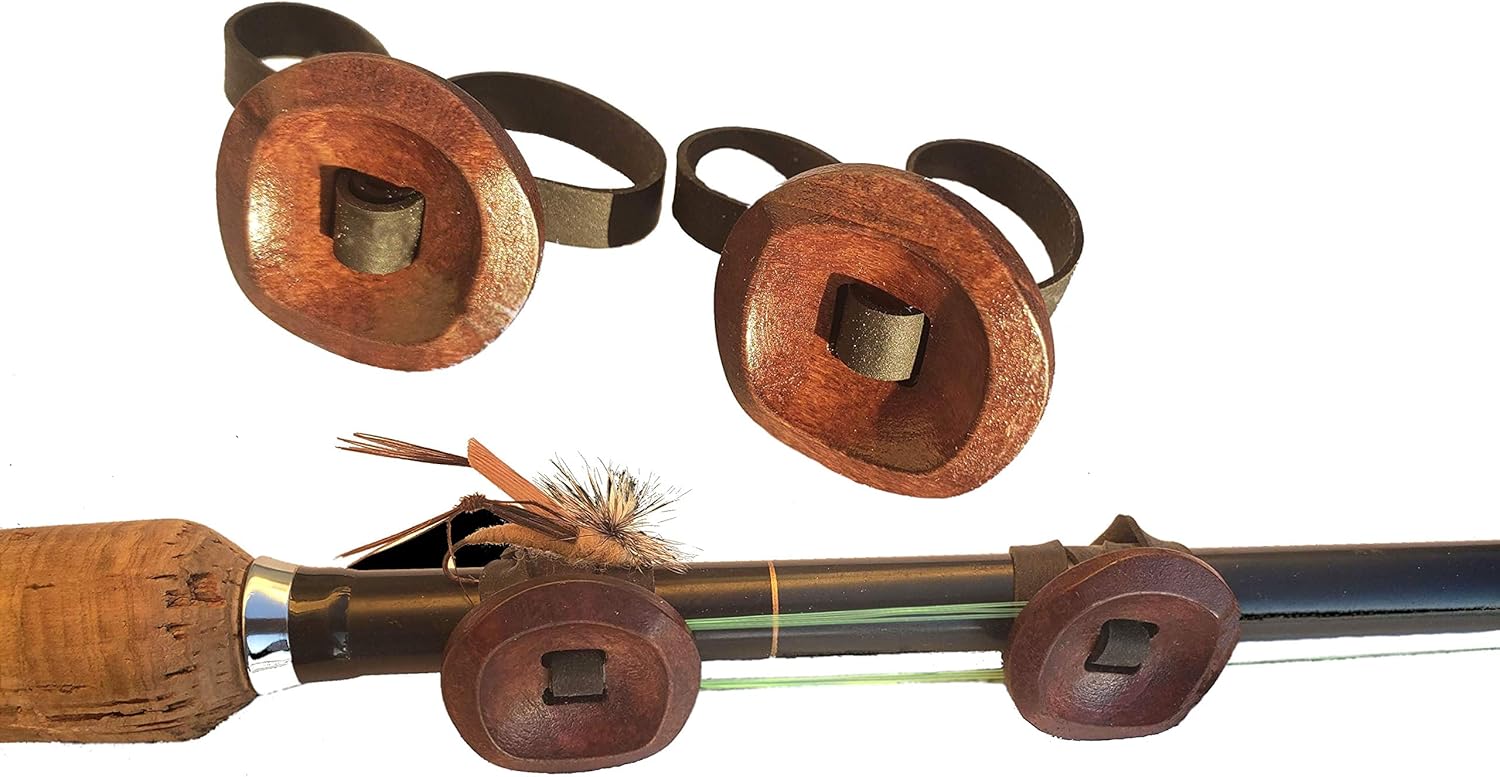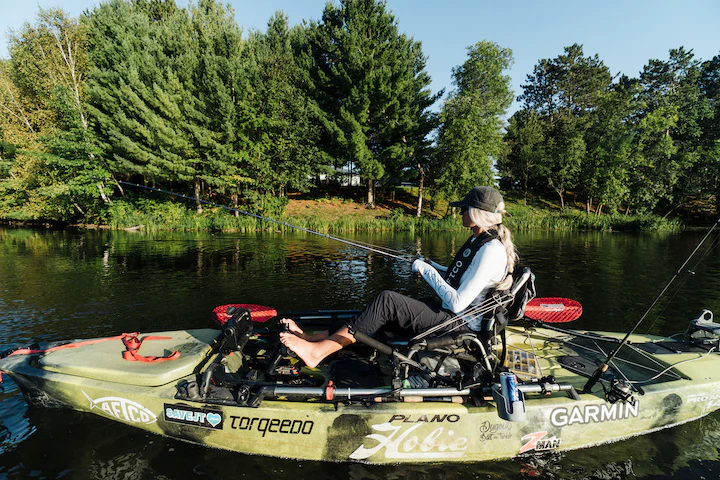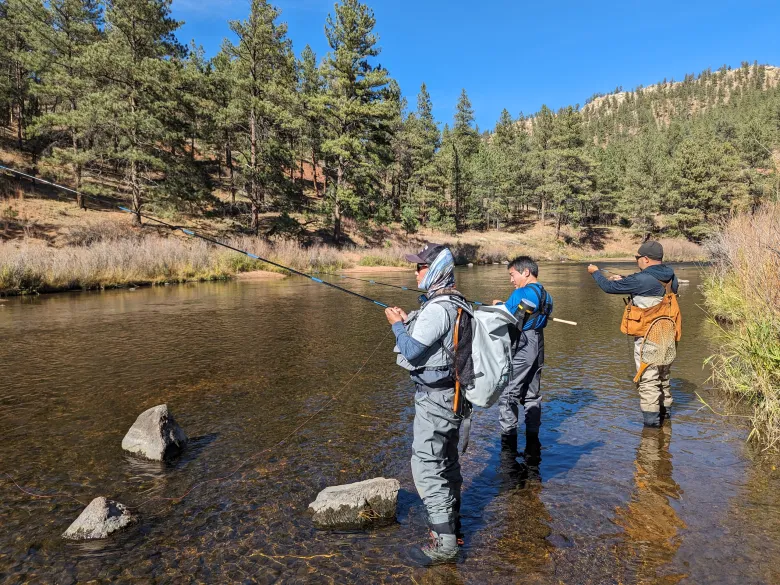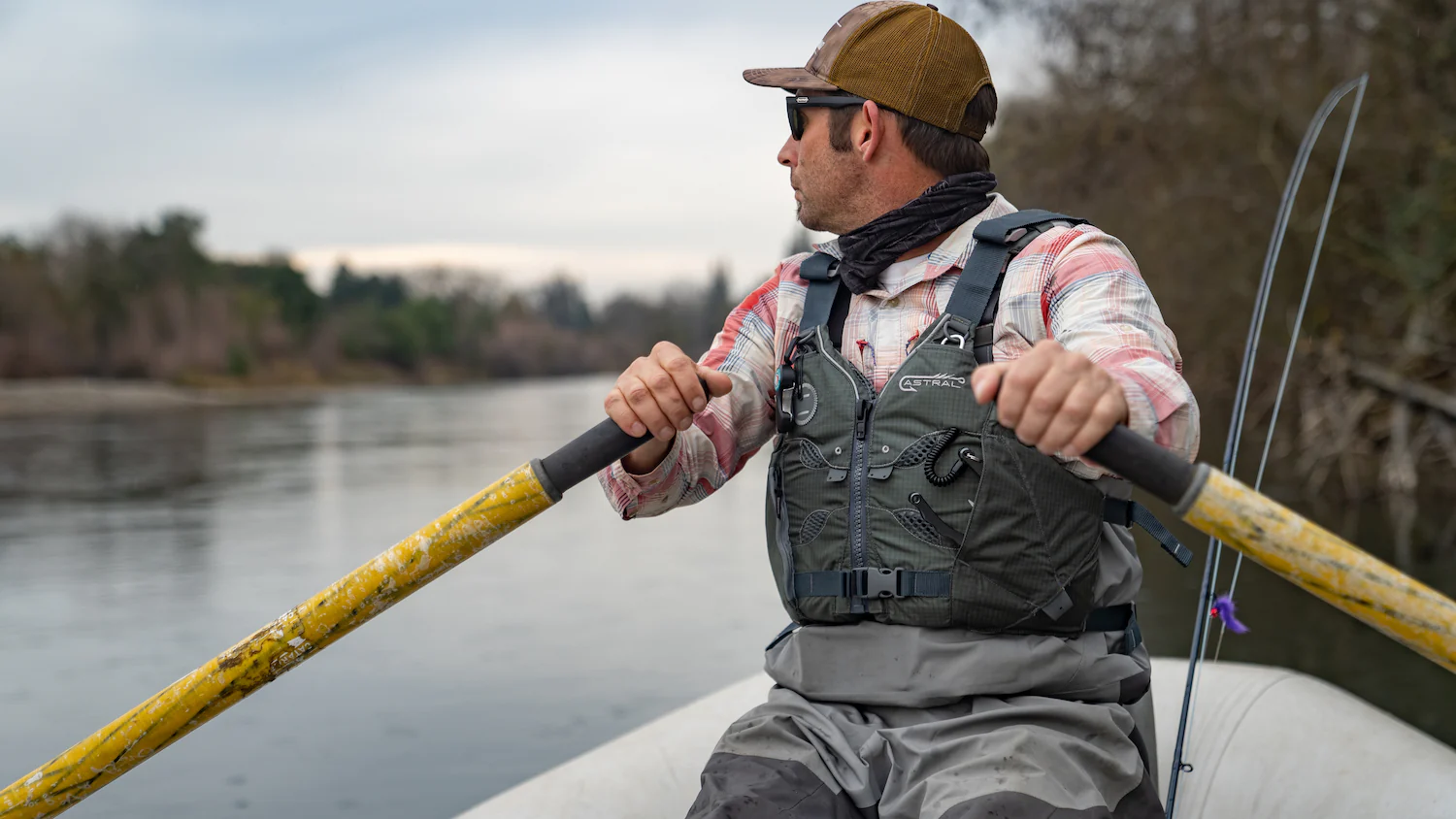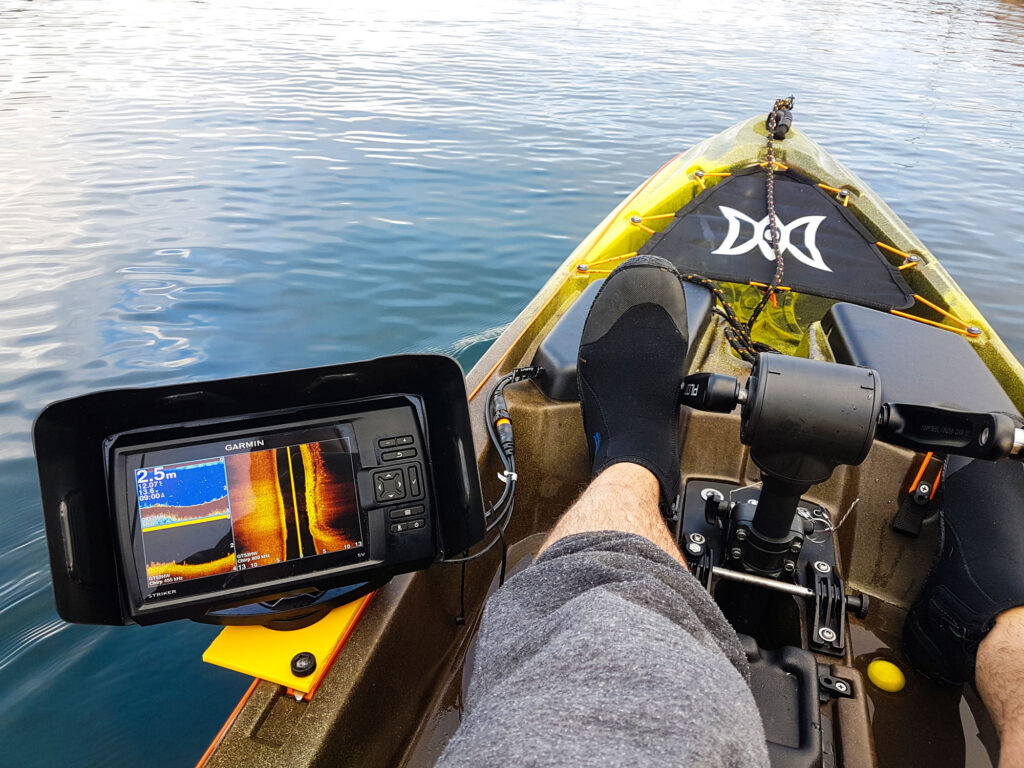Table of Contents
Now, let us discuss the angling weights and bobbers in this article. We’ll cover their uses and how they can improve your fishing.
To fish in a serene pond, a river, or the open sea, you must know the tools needed. So, informed choices will be key to catching more fish. On this note, let’s jump into one of the best fishing weights and bobbers to elevate your fishing experience.
Understanding the basics of fishing weights and bobbers
Fishing weights, or fishing sinkers, are vital for lowering bait to the fish. They help it reach the best depth for catching more fish.
They are made from an array of patterns and forms, which may include leather straps, fabric, metal, or even ceramic. Each of them serves a specific function.
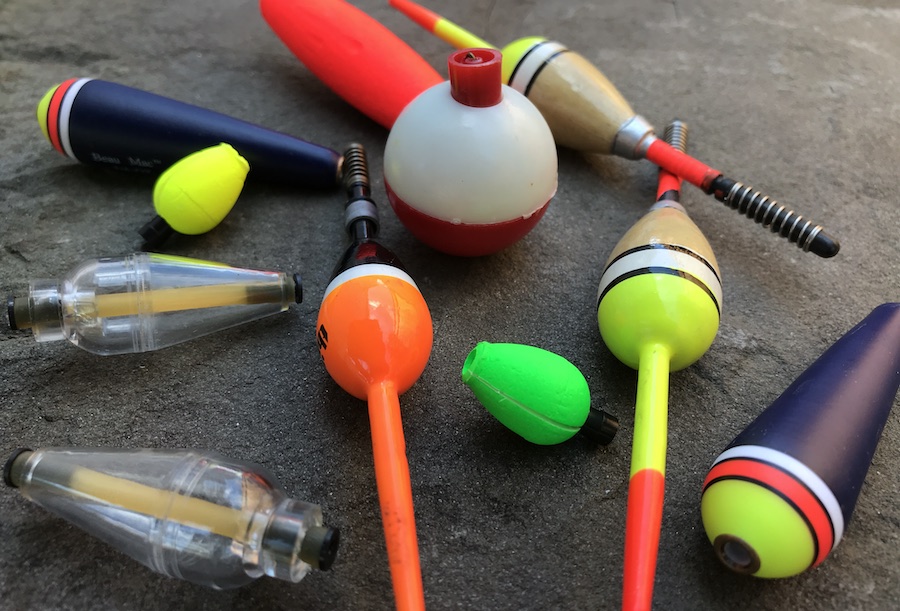
For example, the plain split-shot weight is best to go as a freshwater fisherman and can simply clamp to the fishing line to make the bait sink. Unlike this, pyramid weights are surf anglers’ favorite. They sink into the sand and mud at the same time, unlike other fishing sinkers. The weight of the lead is chosen considering the type of fish being seized, the rate of the current water, and the fishing area.
Bobbers or fishing floats as they are also called by some people have two functions, that is, an identification feature and a safety feature. It is a device that not only keeps the bait at a specific depth but also an eyesight tool for fish biting.
Some weights are the same. Some are smaller or bigger. Some have different shapes. This helps anglers match their tactics to specific conditions.
It may sound cliche, but the small, red-and-white bobbers are the most iconic fishing gear. They are perfect for still or slightly moving water.
Mask bobbers are great for fishing in different waters. They are useful. But, slip bobbers with depth control are better. They are invaluable for deep-sea fishing, where precise bait placement is key.
Choosing a bobber is key. It will improve your fishing skills. You’ll also have a better chance of catching fish.
Types of Fishing Weights
Split Shot Weights:
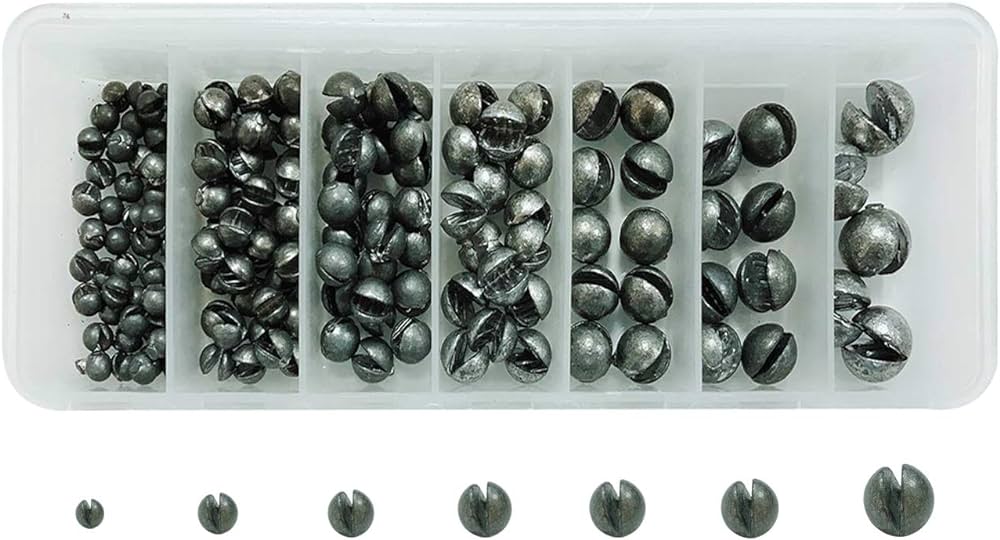
This is a type of weight that has a round shape, which divides on the central part. They are easy and user-friendly and can be attached & removed from the rope without cutting it. This makes them perfect for touch fishing, where you will need to vary the weights constantly. The splitting shot weights are a bad choice. They can get stuck when fishing in dense weeds or rocky areas.
Egg Sinkers:
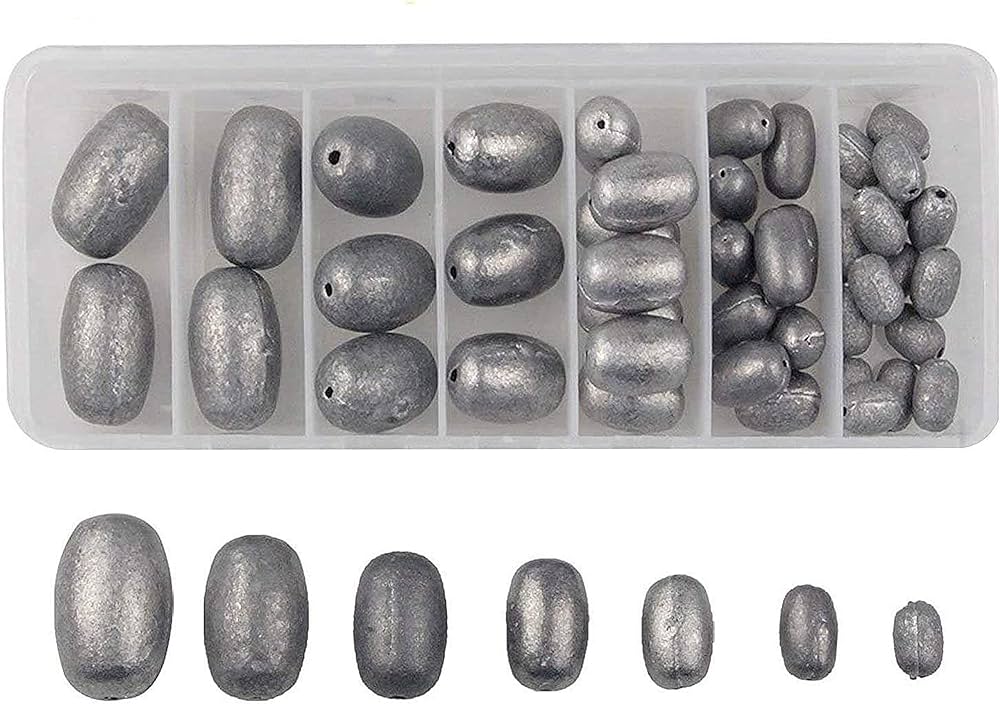
These small fishing weights and bobbers imitate the egg shape and are the best fit for bottom fishing. The line has a special structure. It can be set without any pinching. It gives the pull immediately when the fish bites. The rigging gives the anglers an edge. They can catch the fish before the fish realize they are bait and have to release the line.
Bullet Weights:
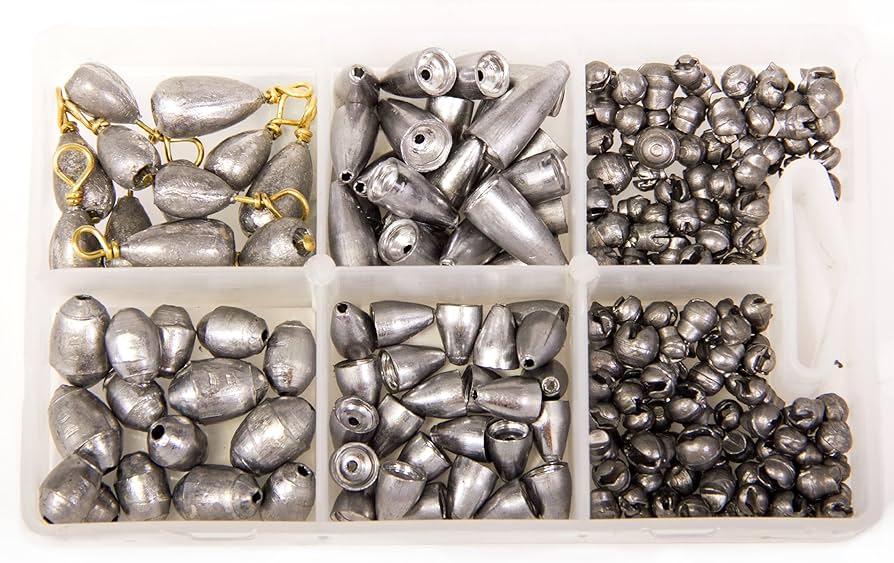
Bullet weights are sleek and well-nigh cylindrical weights for no-tackle fishing. Their design lets them move easily in weeds and rocks without getting stuck. The bullet weights, mainly used, are tied on the fishing line first as an attachment before the hook is added. A perfect bait ball is presented by the weight and this helps the bait dive into the water.
Bank Sinkers:
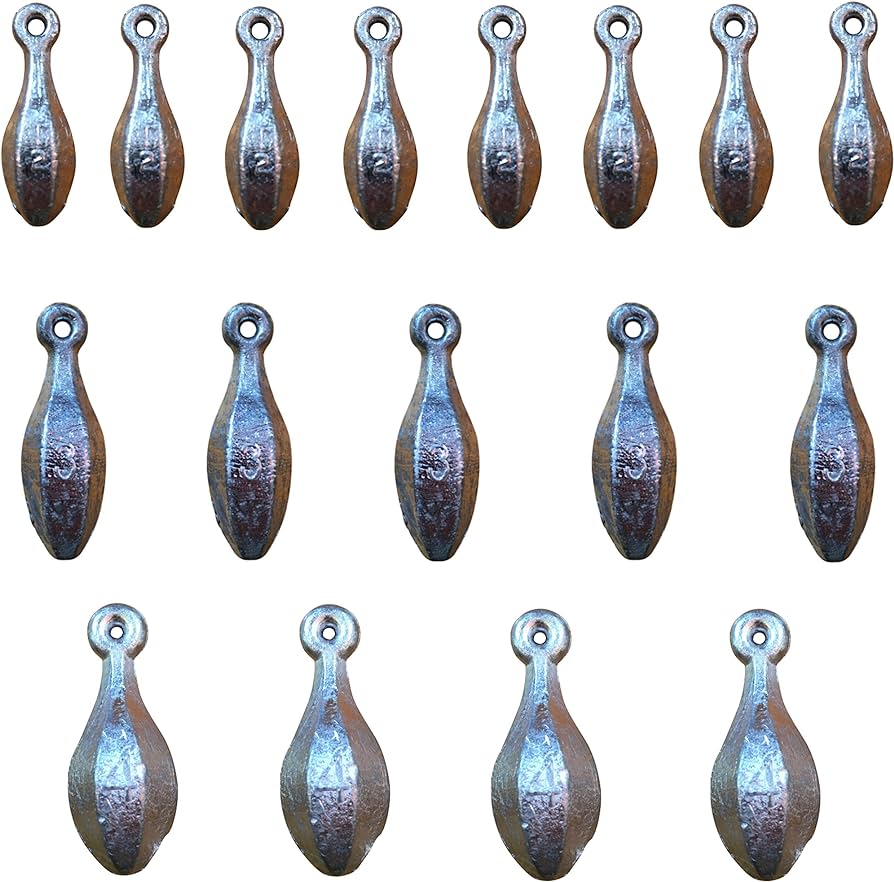
Slip sinkers match the shape of a teardrop using the hole at the skinny end for the fishing line. They are the heaviest of such weights. They are good for deep-sea fishing and fast, river currents. They’re designed to hold the bait in place in strong streams.
Pyramid Sinkers:
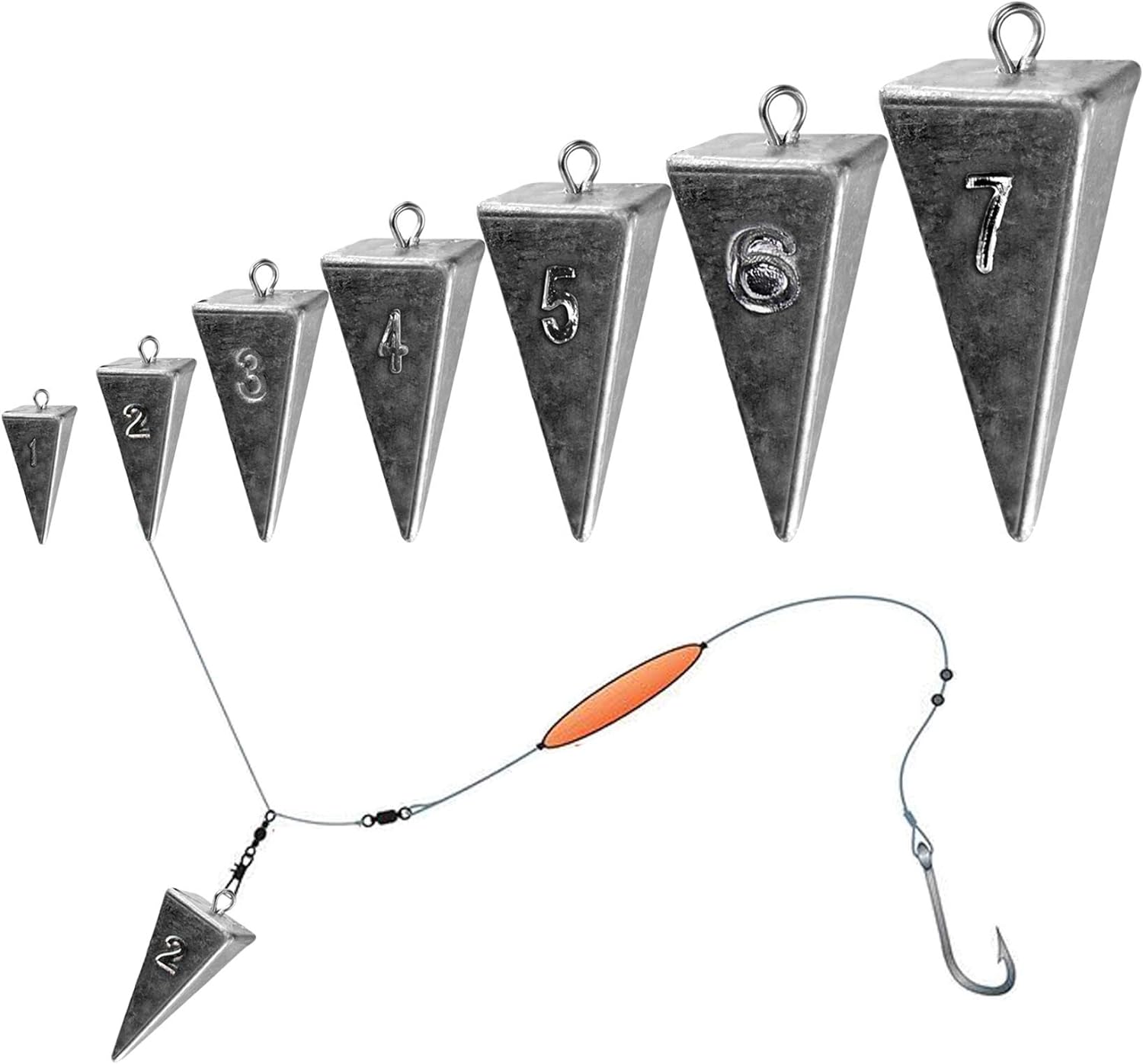
Sinkers in the form of pyramid designs are used with the attachment to the line at the top. This structure lets them dig into sandy or muddy bottoms. So, they are perfect for side fishing. Once submerged, this fishing equipment may be cast far and wide. It may end up in the open ocean or be buffeted by river currents.
Types of Fishing Bobbers
Round Plastic Fishing Floats:
Fishing floats are the regular types of bobbers and the most common ones you find in the majority of fishing gear stores. Plastic is used to make them which are commonly circles. They are very often in the red and white color scheme, and you can occasionally get them from other colors too.
The biggest advantage of these balloons is their visibility. They can be seen from afar. In addition, they have a high level of sensitivity thus nipping off even the tiniest bite will not go unnoticed by them. Yet, the name of the game can be ruined by their size, usually leading to fish fleeing as quickly as possible.
Slip Bobbers:
Bullshots should be a stage in learning that comes after the common round plastic floats. In contrast to conventional hooks, these have an empty eye through which the fishing line can go.
By configuring it this way the debris is less likely to capture on the falling hook. These fishing bobbers enable them to thrive in such environments, making them perfect catches for fishing at such great depths. They are the typical known pair with a stop knot; it can be as along the line as desired and used for controlling the depth.
Pencil Floats:
Pencil float is a word that has ‘pencil’ in it as well which has a long and small shape as a pencil does. Most models are rather crafted from balsa wood or foam. Pencil floats are very sensitive. They can catch even the smallest fish, as well as some moderate-sized ones.
They are inventoried to fall when there is a nibble, thus they are the perfect kit for revealing strong’ or nervously biting fish. However, in the case of some, their thin appearance might not be noticeable from a far distance.
Quill Floats:
Quill bobber is another kind of bobber that is also conventional. The original creations were crafted from quill feathers, hence the name. Current models are made from either plastic or balsa instead.
Quill drops are light and subtle, which allows them to be the ideal options for Stillwater fishing or for catching minuscule, fussy fish. They are very good for presenting baits from a distance that few fish would otherwise realize.
Waggler Floats:
Being different from all other floats, the waggler float is tied to the line only at the end close to the fishing line. This principle keeps all sails at an even angle to the wind. They won’t be affected by different wave sizes or wind strengths.
They could have a variety of shapes, including straight or bodied with a long, narrow design. In still waters, straight waggler, and in rough water, an oscillating tongue-shaped wagger works the best.
Round Plastic Floats:
These are the regular types of bobbers and the most common ones you find in the majority of fishing gear stores. Plastic is used to make them which are commonly circles. They are very often in the red and white color scheme, and you can occasionally get them from other colors too.
The biggest advantage of these balloons is their visibility. They can be seen from afar. In addition, they have a high level of sensitivity thus nipping off even the tiniest bite will not go unnoticed by them. Yet, the name of the game can be ruined by their size, usually leading to fish fleeing as quickly as possible.
Slip Bobbers:
Bullshots should be a stage in learning that comes after the common round plastic floats. In contrast to conventional hooks, these have an empty eye through which the fishing line can go.
By configuring it this way the debris is less likely to capture on the falling hook. These traits enable them to thrive in such environments, making them perfect catches for fishing at such great depths. They are the typical known pair with a stop knot; it can be as along the line as desired and used for controlling the depth.
Pencil Floats:
Pencil float is a word that has ‘pencil’ in it as well which has a long and small shape as a pencil does. Most models are rather crafted from balsa wood or foam. Pencil floats are very sensitive. They can catch even the smallest fish, as well as some moderate-sized ones.
They are inventoried to fall when there is a nibble, thus they are the perfect kit for revealing strong’ or nervously biting fish. However, in the case of some, their thin appearance might not be noticeable from a far distance.
Quill Floats:
Quill bobber is another kind of bobber that is also conventional. The original creations were crafted from quill feathers, hence the name. Current models are made from either plastic or balsa instead.
Quill drops are light and subtle, which allows them to be the ideal options for Stillwater fishing or for catching minuscule, fussy fish. They are very good for presenting baits from a distance that few fish would otherwise realize.
Waggler Floats:
Being different from all other floats, the waggler float is tied to the line only at the end close to the fishing line. This principle keeps all sails at an even angle to the wind. They won’t be affected by different wave sizes or wind strengths.
They could have a variety of shapes, including straight or bodied with a long, narrow design. In still waters, straight waggler, and in rough water, an oscillating tongue-shaped wagger works the best.
Understand the Purpose of Weights and Bobbers
The most important is to know the fishing weights and bobbers purpose before deciding on the type of them. The main aspect of bobber weight is that it helps your bait to sink at a particular depth. The indicator bobber shows up when a fish bites your line. The bobber acts as a depth finder to enable you to fish at the right depth.
The weight that you choose will determine how deep your bait is and to what extent the bait can be fast-sinker. On the other hand, the bobber you choose will help in effective bite detection. Thus, picking the best weight and bobber will put my bait as close to the fish below as possible and make my fishing more successful.
Consider the Type of Fish
The depths at which fish of different species find their natural habitat vary. Similarly, trout usually stay at the water’s surface. Catfish are near the bottom. Subsequently, species selection will be directed to proper bobber and weight choice.
If you are targeting species near the water’s surface, use a lighter, smaller float. On the contrary, if your target fish lives below the surface, use a heavier weight and a larger bobber.
Take into account the Current
Also, the pace and size of the water flow greatly affect your weight and bobber choice. In case you are fishing in a swift river then you must use a greater weight than usual to keep your bait from flowing downstream.
The weights for flowing water and still water are different. The lightweights are enough for slow currents or still waters.
In fast currents, use a larger bobber that will float. It should be hard to miss and not swept away, as you will follow its path. When the water remains low and mushy, a tiny and less discrete bobber can be preferable.
Consider the Fishing Environment
The environment where you fish is crucial. It can greatly affect your decision to use either sites or bobbers. If you’re fishing in clearwater, select transparent or dull-colored bobbers to help you hide your presence in front of fish. On the other hand, the bobber with a bright color is needed to make a bright color have more visibility in the murky water.
In fisheries with plenty of plants and other forms of vegetation, it is preferable to have a lightweight to prevent snagging your hook. Weighing is necessary otherwise, there may be a current problem because the deep bottoms cannot make us stand on them.
Assess the Weather Conditions
Changing weather causes fish to move or change their behavior. As a result, you have to choose a weight and bobber accordingly. In windy conditions, a heavier weight will assist in stabilizing your line. On the other hand, a bigger bobber will not be lost in the surf whilst spotting it is essential. On calm days, use a gentle weight and a small bobber. This won’t harm the water’s surface, making it easier for fish to move.
Experiment and Adjust
Remember, fishing needs both practice and experimentation. What works well in one situation, might not work well in another one. So, don’t hesitate to try the different fishing weights and bobbers. Adjust your rig as needed.

